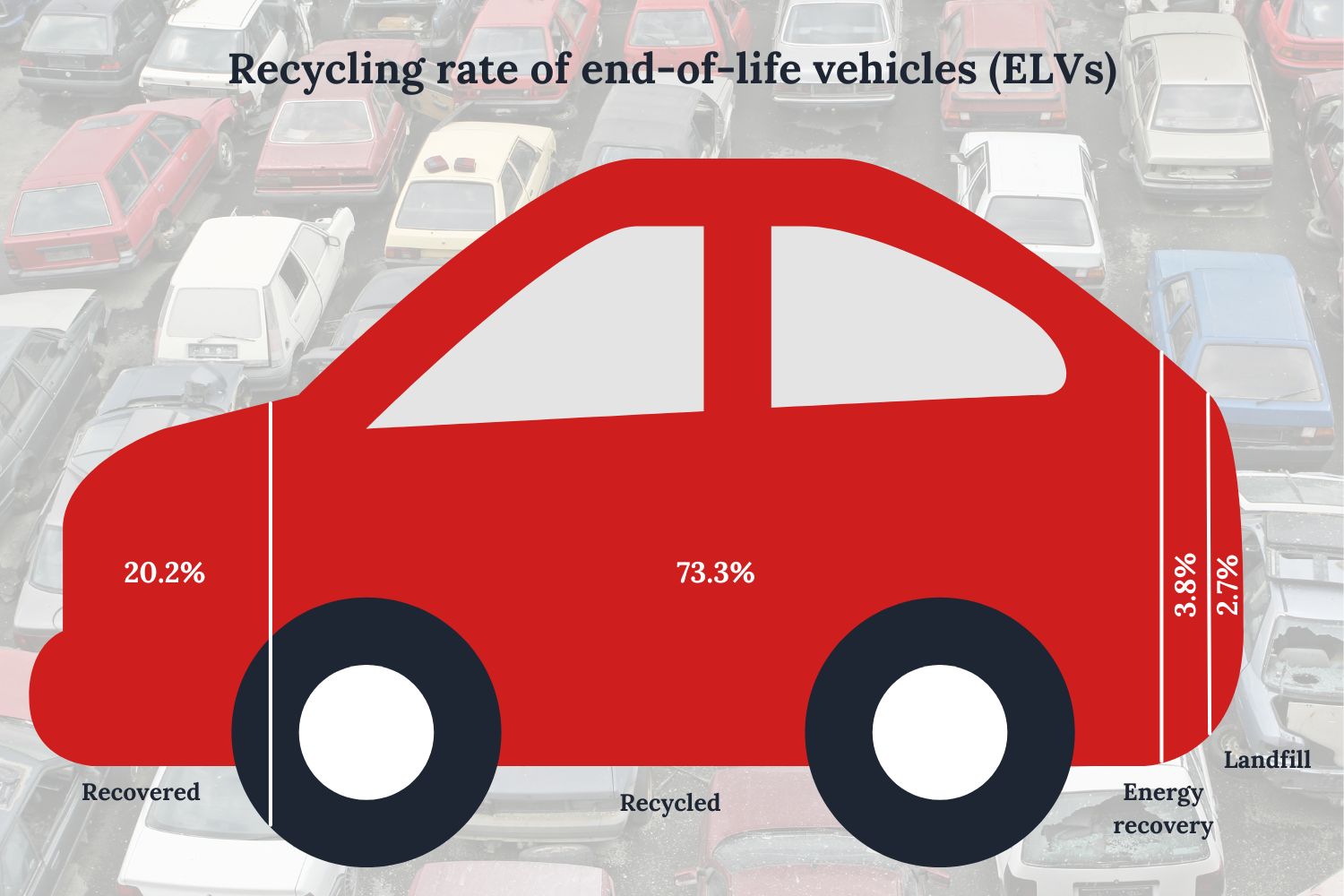Belgium is one of the best countries in the European Union when it comes to reusing, recycling and recovering end-of-life vehicles (ELVs). However, while this is true, thousands of vehicles go missing each year according to a report by Febelauto, the Belgian car recycling organisation.
Vehicles which are too old, damaged or no longer meet the emission standards end up on the market or in scrapyards. From there they either end up being sold as second-hand or are marked as ELVs, in which case they end up in one of 113 centres approved by Febelauto. According to the latest report, 103,659 vehicles met this fate, with a 97.3% recycling rate.

Car parts that can be reused are recovered (20.2%). Once the car has been shredded, all the materials are separated for recycling (73.3%) or energy recovery (3.8%). The rest (2.7%) ends up in landfill. Data: Febelauto. Credit: The Brussels Times.
Despite these great numbers, Febelauto expects that around 25,000 to 30,000 vehicles disappear every year. This is not a problem isolated to only Belgium, as roughly 3.77 million (35%) cars across the Member States disappear each year.
"This problem appears to be due mainly to shortcomings in national registration systems, lack of interconnection between Member States regarding vehicle registration and de-registration, and the illegal processing and export of end-of-life vehicles," the authors noted.
In Belgium, Catherine Lenaerts, director of Febelauto explained that they try to collect the exact figures of Belgium's missing vehicles, "but it is very difficult because there is no traceability in Belgium. Once you return your number plate, the DIV no longer knows where your vehicle is."
Some vehicles that escape the system are believed to be kept in private ownership or traded illegally while others are sold in other member states or even exported (illegally) from the EU.
Hajjar also mentioned the cars not meeting current emission standards, using Belgium as an example. "In Belgium, there are all these Euro 4 vehicles that have to be taken off the road, mainly diesels."
Blurry definitions
Another problem is that different European countries have different definitions of ELVs, making it difficult to distinguish between them. Criteria for distinguishing between the different vehicles is outlined in the "Correspondents' Guide No. 9", but the document is not legally binding. Austria is in fact the only country to make it legally binding. In Belgium, "only Wallonia has recognised the mandatory use of these guidelines," the report noted.
The Commission is due to present an update of the text of the directive on end-of-life vehicles in the course of 2023 to try to resolve these various problems, reports La Libre Belgique. The text should become an ordinance, "and therefore enter into force immediately", explained Catherine Lenaerts.
"In the new European legislation, we hope that there will be at least new criteria for the export of vehicles and that this will only be possible with a technical inspection," Lenaerts continued. "This seems essential to us in order to make the difference between a used vehicle and an ELV."
The text will also extend the scope of the regulation to other vehicles, as well as impose better traceability and a rate of recycled materials for the construction of new vehicles.

